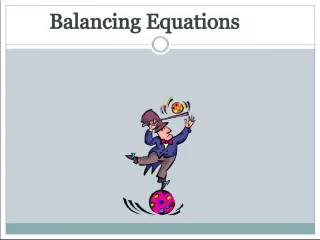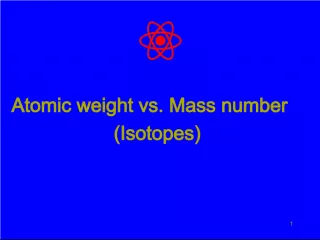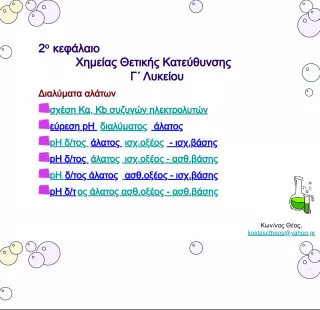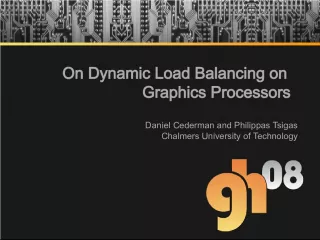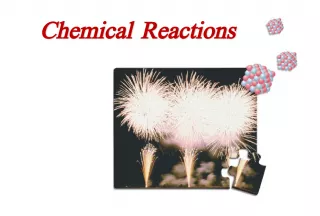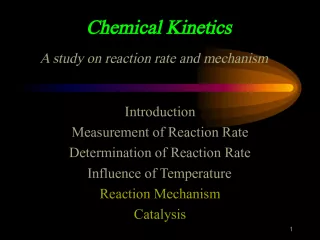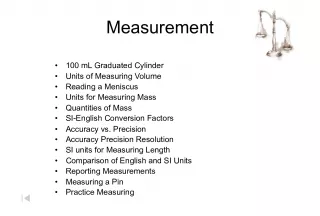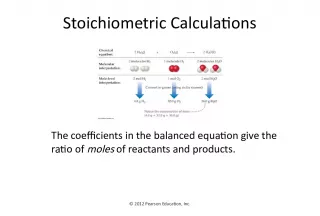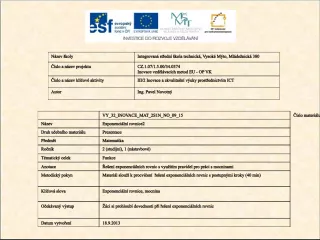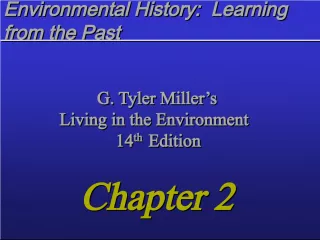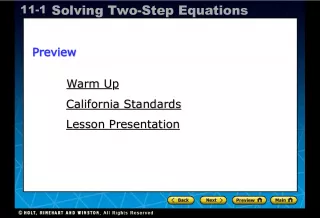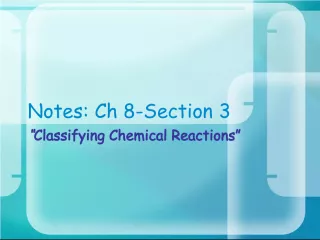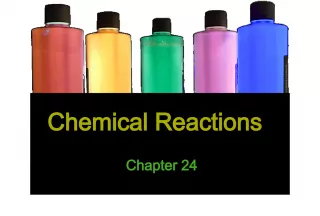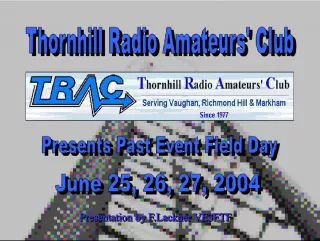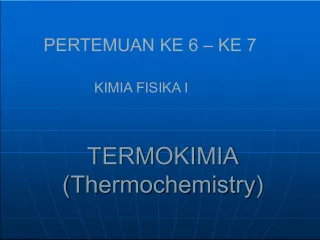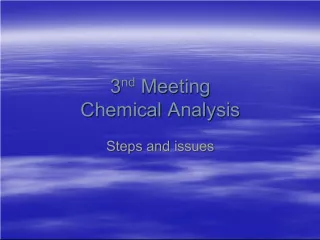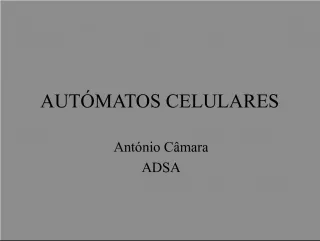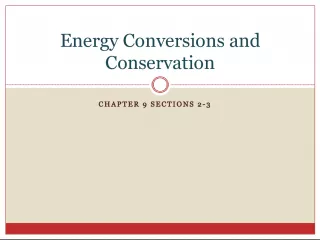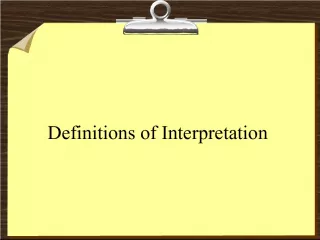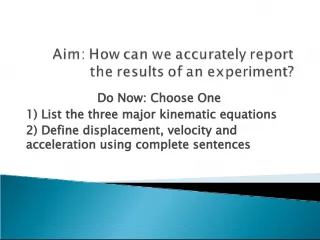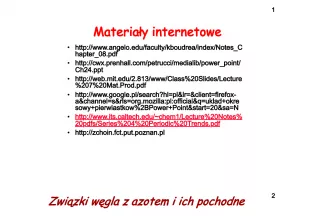Understanding Balancing Chemical Equations and the Law of Conservation of Mass
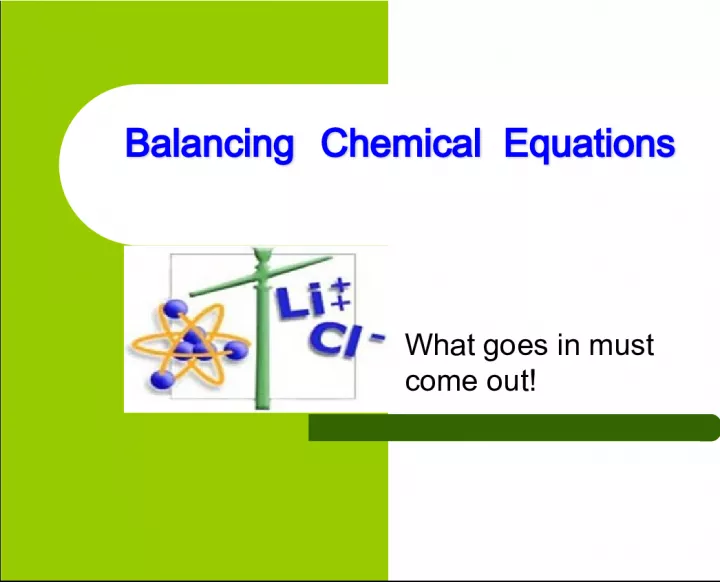

Learn the importance of balancing chemical equations and the Law of Conservation of Mass, which states that mass cannot be created or destroyed in a chemical reaction.
- Uploaded on | 7 Views
-
 kolodar
kolodar
About Understanding Balancing Chemical Equations and the Law of Conservation of Mass
PowerPoint presentation about 'Understanding Balancing Chemical Equations and the Law of Conservation of Mass'. This presentation describes the topic on Learn the importance of balancing chemical equations and the Law of Conservation of Mass, which states that mass cannot be created or destroyed in a chemical reaction.. The key topics included in this slideshow are . Download this presentation absolutely free.
Presentation Transcript
1. Balancing Chemical Equations Balancing Chemical Equations What goes in must come out!
2. What is the Law of Conservation of Mass? If 14 grams of N 2 reacted with 3 grams of H 2 , how many grams of ammonia would be produced? In the reaction N 2 + 3H 2 2NH 3
3. Law of Conservation of Mass Law of Conservation of Mass You need to remember this law! The Law of Conservation of Mass states: that mass is neither created nor destroyed in any chemical reaction . Therefore balancing of equations requires the same number of atoms on both sides of a chemical reaction. The number of atoms in the Reactants must equal the Number of atoms in the Products
4. Do these reactions abide by the Law of Conservation of Mass?
5. Balancing Chemical Equations Balancing Chemical Equations Balancing a chemical equation is much like the work of an accountant who has to show every penny that comes in and where it has gone to.
6. In order to balance equations, we first must remember. How to count atoms! C atoms= 1 O atoms= 2 C atoms= 6 O atoms= 6 x 2= 12 Mg atoms= 8 N atoms= 8 x 1 x 2= 16 O atoms= 8 x 3 x 2= 48
7. Practice Problems #2a-e! Git er done!
8. How many of each? a. 2Na + 2H 2 O 2NaOH + H 2 Reactants Products Na H O Balanced? ___Yes ___No
9. How many of each? c. NaCl + F 2 NaF +Cl 2 Reactants Products Na Cl F Balanced? ___Yes ___No
10. Practice Problems #3a-e
11. Balancing Equations Balancing Equations Balancing Equations Balancing Equations ___ Al(s) + ___ Br 2 (l) ---> ___ Al 2 Br 6 (s) ___ Al(s) + ___ Br 2 (l) ---> ___ Al 2 Br 6 (s) 2 3
12. Balancing Equations Balancing Equations Balancing Equations Balancing Equations Try this one! Try this one! ___ CH 4 + ___ O 2 ---> ___ CO 2 + ___H 2 O ___ CH 4 + ___ O 2 ---> ___ CO 2 + ___H 2 O
13. CH 4 + 2O 2 ---> CO 2 + 2H 2 O CH 4 + 2O 2 ---> CO 2 + 2H 2 O
14. [1] Just count up the atoms on each side Mg + O 2 MgO Mg O 1 1 1 2 [2] The numbers aren t balanced so then add BIG numbers to make up for any shortages And adjust totals Mg + O 2 MgO Mg O 1 1 1 2 2 2 2
15. Mg + O 2 MgO Mg O 1 2 2 2 2 But the numbers still aren t equal, so add another BIG number 2 And adjust totals again NOW BOTH SIDES HAVE EQUAL NUMBERS OF ATOMS WE SAY THAT THE EQUATION IS BALANCED!! 2
16. Try to balance these equations on WS D.6(p.4 of your packet) using the same method: [1] H 2 + O 2 H 2 O [3] Ca + H 2 O Ca(OH) 2 + H 2 [2] Mg + O 2 MgO
17. Try to balance these equations on WS D.6(p.4 of your packet) using the same method: [1] 2 H 2 + O 2 2 H 2 O [3] Ca + 2 H 2 O Ca(OH) 2 + H 2 [2] 2 Mg + O 2 2 MgO
19. Steps to Balance Equations: Balance elements that appear only once on each side of the arrow. Next balance elements that appear only once on each side but have different numbers of atoms. Finally balance elements that are in two formulas in the same side.
20. Example NH 3 + O 2 NO + H 2 O Reactants Products N appears once on both sides in equal numbers, so the coefficient for NH 3 is the same as for NO.
21. Example: NH 3 + O2 NO + H 2 O Next look at H which appears only once on each side but has different numbers of atoms, 3 on the left and 2 on the right. The least common multiple of 3 and 2 is 6, so rewrite the equation to get 6 atoms of H on both sides: 2 NH 3 + O 2 NO + 3 H 2 O
22. Example: 2 NH 3 + O2 NO + 3 H 2 O There are 2 oxygen atoms on the left and 5 on the right the least common multiple of 2 and 5 is 10, so rewrite the equation as: 2 NH 3 + 5 O 2 4 NO + 6 H 2 O
23. Now count the atoms on each side: 2 NH3 + 5 O2 4 NO + 6 H2O Write them out keeping them on the appropriate side of the chemical equation 2 N (nitrogen atoms) 4 N (nitrogen atoms) 6 H (hydrogen atoms) 12 H (hydrogen atoms) 10 O (oxygen atoms) 10 O (oxygen atoms) YET This shows the equation not to be balanced YET
24. Check the number again: If you double the N and H on the left the equation will be balanced: 4 NH3 + 5 O2 4 NO + 6 H2O
25. Double-check: 4 NH3 + 5 O2 4 NO + 6 H2O 4 N (nitrogen atoms) 4 N (nitrogen atoms) 12 H ( hydrogen atoms) 12 H ( hydrogen atoms) 10 O (oxygen atoms) 10 O (oxygen atoms) The equation is Balanced
